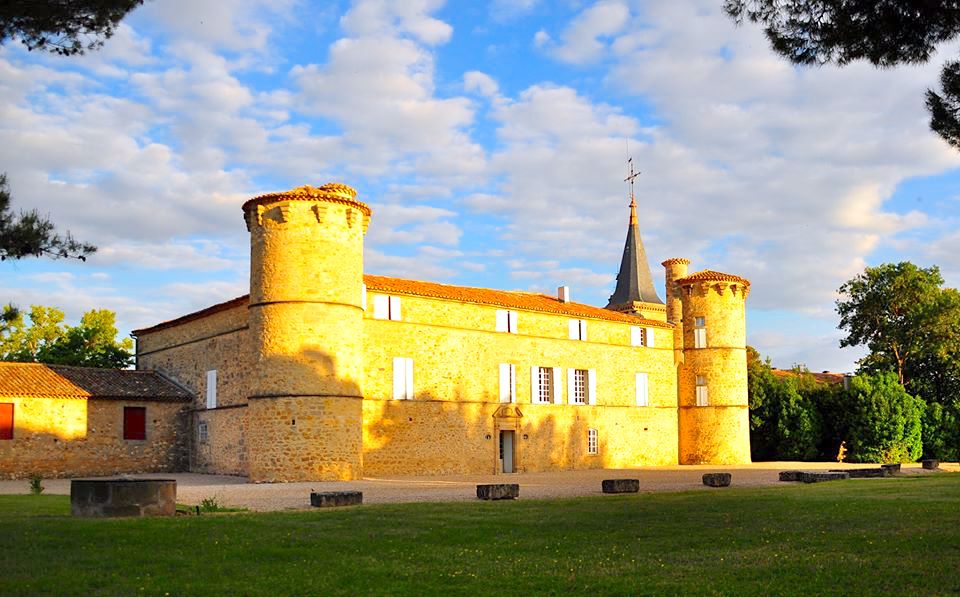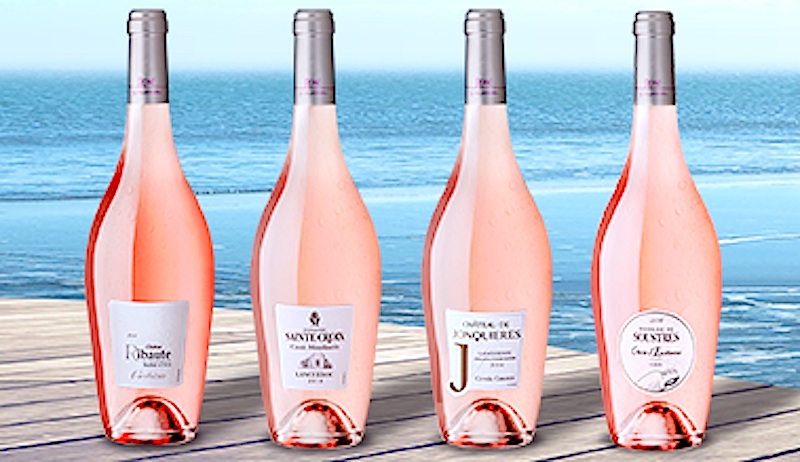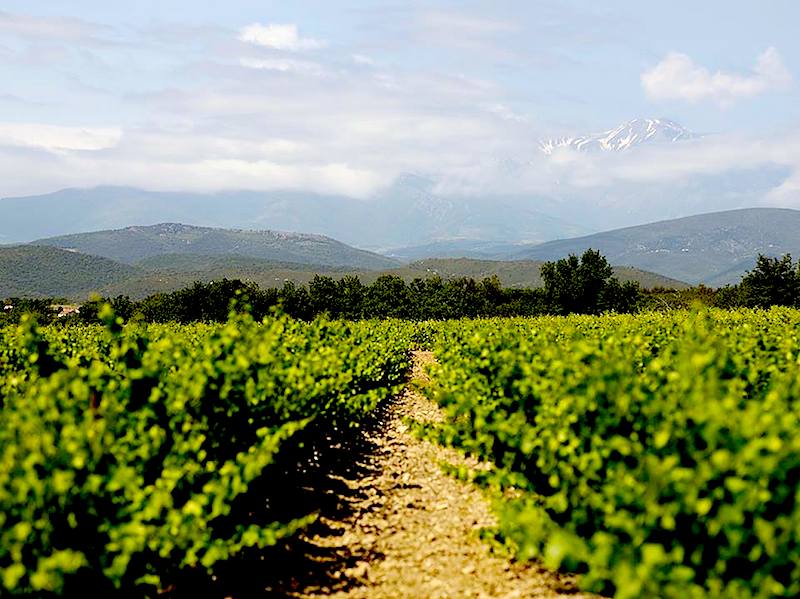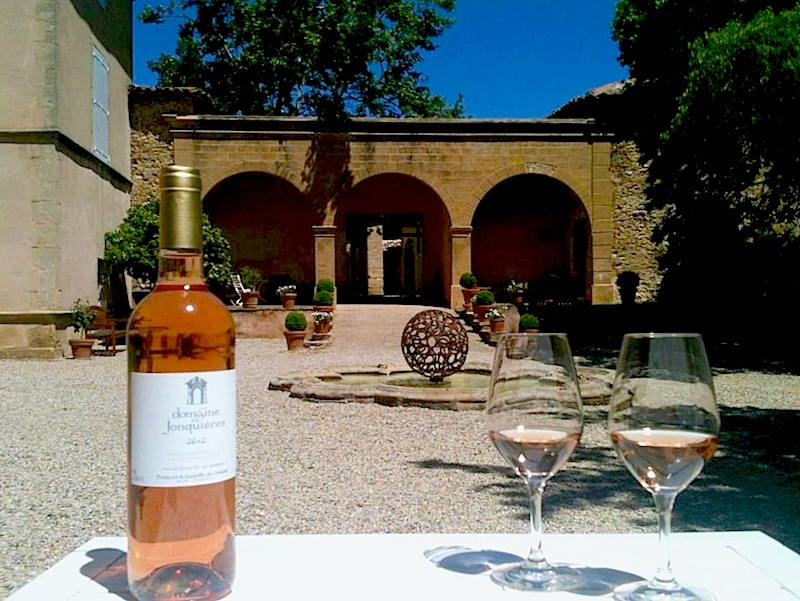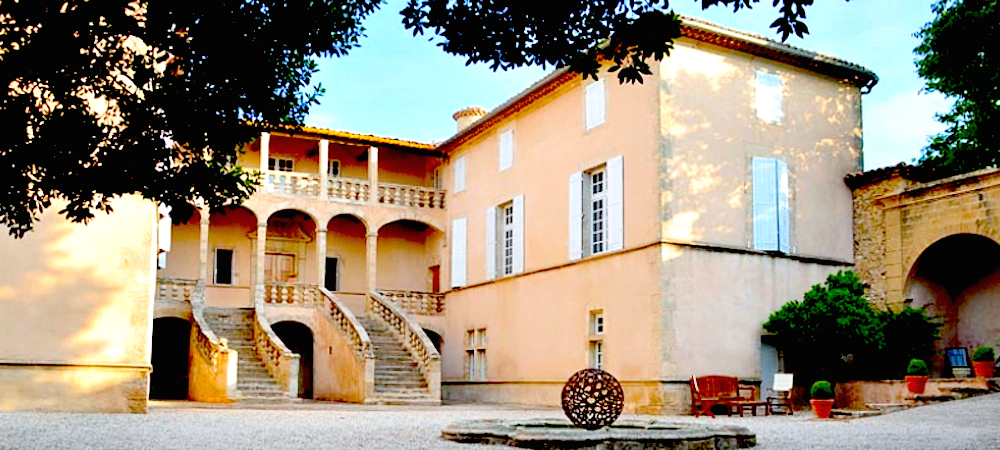Years ago – no, let’s be honest: make that “decades ago” – when I was a university student in Montpellier in Languedoc in the South of France, the wine from the region was often labeled “vin de table rouge” and readily available for little more than five francs, which made it immensely popular for any gathering of students.
What a difference thirty years makes. France’s largest wine producer, the Val d’Orbieu group, currently cultivates more than 42,000 acres of vines in the Languedoc Roussillon region, which has become the heart of high-quality rosé wines. The largest collective vineyard in the world, Val d’Orbieu’s wines derive from 2,500 winegrowers, which extend through 11 wine cooperatives and 60 estates.
In honor of the Languedoc Roussillon region’s excellent harvests of recent years, Val d’Orbieu’s producers launched a new range of premium rosés. Presented in elegantly sinuous bottles, these pale pink and aromatic rosés evoke the insouciant spirit of the South of France in the Sixties: think Bardot and Seberg, bikinis and yachts, cerulean waters – and rosé wine.
During the past decade, rosé wines have become increasingly popular in the States, with the US second only to France in terms of global rosé consumption. As the largest retail wine market in the world, the US consumes more than 13% of all rosé wines worldwide (with more than 20% of that total imported in the metropolitan New York area).
What has helped make rosé so consistently alluring to many budding oenophiles is the wine’s appealing color and accessible flavor, alongside an attractive price point. Val d’Orbieu’s rosés, for example, combine a lively freshness with an intensity of flavor the result of an ancient terroir.
The vineyards of Val d’Orbieu’s Château Notre Dame du Quatourze are located in a terroir first planted by the Romans more than 2,000 years ago. Founded in the early 19th century, the castle once belonged to the Narbonne archdiocese. The estate’s rosé utilizes Syrah, Grenache, and Cinsault to create a wine evocative of Homer’s “rosy-fingered dawn,” with a rich nose of candied fruit and raspberry, which is followed by an elegant roundness on the palate.
Located near an ancient fortified village, the vineyards of Domaine Sainte Croix are perched on a limestone hilltop. Domaine de Sainte Croix Cuvée Montlaurès is 80% Grenache and 20% Cinsault, which results in a wine tinted rose petal pink with floral aromas. A lively mineral finish makes this wine a perfect complement to fish and fennel, as well as lamb.
The Ribaute name dates from 802, with a castle mentioned in documents from 1285. A combination of 85% Syrah and 15% Grenache, Château Ribaute Cuvée Senhal d’Aric exhibits a pink apricot hue, with a delicate nose comprised of peach and freshly-picked berries – and a slightly fruity finish that is elegant on the palate.
Created in 1967, Val d’Orbieu utilizes nearly 50 years of winegrowing experience in the heart of Languedoc for the production of its wines, more than one-third of which are exported. Val d’Orbieu producers are committed to sustainable development and an ethical approach in bringing over 2,000 products to market. In 2013, Val d’Orbieu wines received 72 medals in various wine competitions.
For those interested in wine tourism, Château de Jonquières welcomes visitors to the Mediterranean countryside in what was once a Cistercian granary. Located outside Narbonne in the heart of the Massif de Fontfroide, the four-star luxury property is surrounded by natural gorges and hills and features tennis courts and swimming pool, as well as tastings and seminars. Their rosé, Château de Jonquieres Cuvée Cersius, is a delicate pale rose with a well-balanced finish that pairs well with a seafood salad. In short, a recipe for summer bliss.
As a testament to rosé wine’s increased popularity, the world’s first Food & Wine Festival solely dedicated to rosé wine was held in Miami, which will be followed by another “La Nuit en Rosé” aboard New York’s Hornblower Infinity Yacht in June.
With a price point under twenty dollars, Val d’Orbieu rosé wines are available through US distributors such as House of Burgundy, Vintage Epicure, and Total Wine & More.

